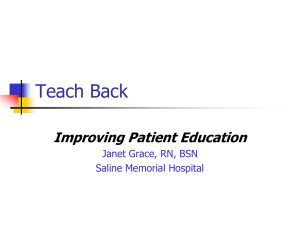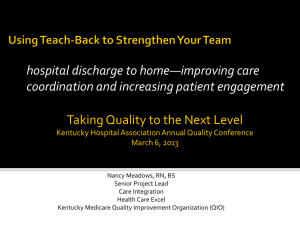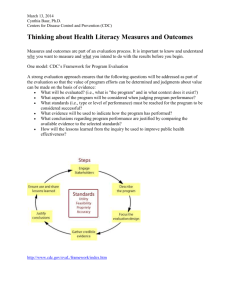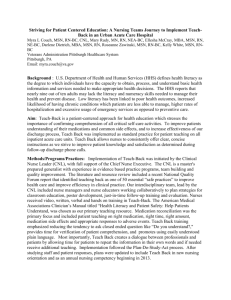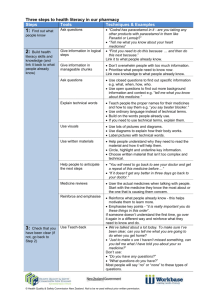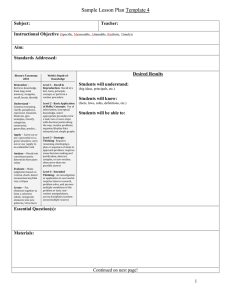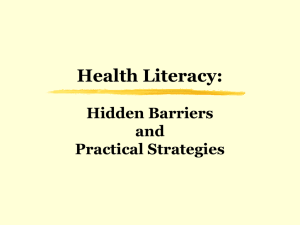Health Literacy and the Teach-Back Method
advertisement
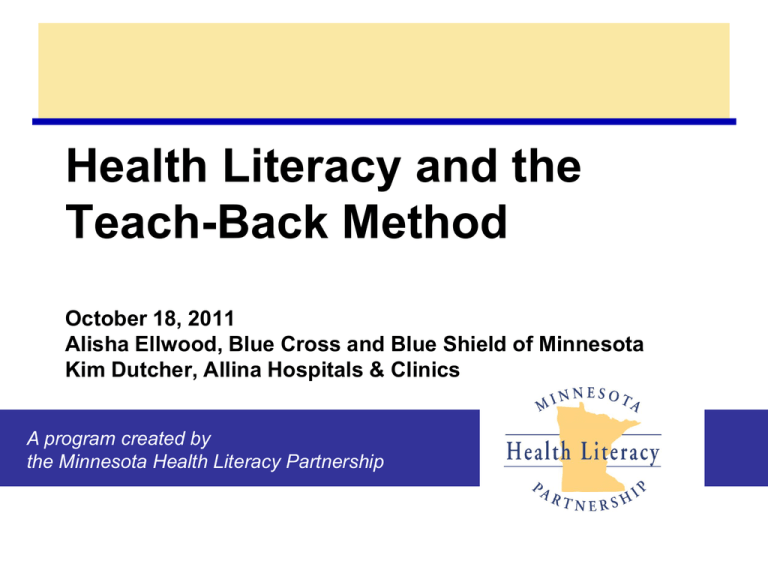
Health Literacy and the Teach-Back Method October 18, 2011 Alisha Ellwood, Blue Cross and Blue Shield of Minnesota Kim Dutcher, Allina Hospitals & Clinics A program created by the Minnesota Health Literacy Partnership The problem with communication is the illusion that it has occurred. >-- George Bernard Shaw “Take 2 aleve bid and flexeril at hs. If not better see me next week” 3 Health Literacy Basics . . . KEEP IT SIMPLE Improve Skills and Reduce Complexity Skills/Ability Demands/Complexity Simple is SMART Simple Meaningful Appropriate Repeat key points Use Teach-back method Teach-Back Basics . . . Teach-Back . . . What? ● Asking patients to repeat in their own words what they need to know or do, in a non-shaming way. ● NOT a test of the patient, but of how well you explained a concept. ● A chance to check for understanding and, if necessary, re-teach the information. Teach-Back . . . Who? • Elderly • Ethnic and racial minorities/LEP • Persons with limited education • Persons of low socioeconomic status • Persons with chronic disease Teach-Back . . . Where? When? Teach-Back can be used in all clinical settings . . . The teach-back technique should replace the more common practice of simply asking a patient, “Do you understand?” Teach-Back . . . Why? Teach-Back is supported by research! Provides an opportunity to check understanding with the patient and reteach if necessary. Communication breakdown TV Show House, Season , Episode Teach-Back . . . How? Ask patients to demonstrate understanding – “What will you tell your spouse about your condition?” – “I want to be sure I explained everything clearly, so can you please explain it back to me so I can be sure I did.” – “Show me what you would do.” Chunk and check Summarize and check for understanding throughout, don’t wait until the end. Do NOT ask . . . – “Do you understand?” Teach-Back in Action Operationalizing Teach-Back • Training needs to be specific and targeted • Providing opportunities to share experience with using teach-back is vital • Practice…practice….practice • Recognize that at times, the family (or caretaker) may be the most appropriate party to conduct teach-back with Impact on patient experience Better understanding = Better outcomes! • Increased quality and patient safety • Improved patient experience and treatment adherence Resources Minnesota Health Literacy Partnership http://www.healthliteracymn.org/ Acknowledgements The Minnesota Health Literacy Partnership would like to thank the following organizations for contributions to this training: Questions?
